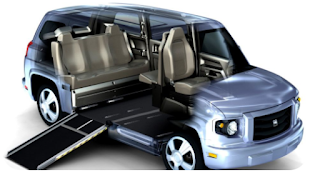While not everyone with disabilities is able to drive a car, some can do so if they have the appropriate training and tools.
The process for adaptive driving begins with a clinical evaluation by an occupational therapist (OT). This is usually done following a referral by a neurologist or other physician. An occupational therapist qualified to perform driving evaluations often has had professional training to become a Certified Driver Rehabilitation Specialist (CDRS). The OT/CDRS will check your current driving skills and your physical capability. The assessment will include your vision, reaction time, cognition, muscle strength in core, arms and legs, and range of motion. If any areas of weakness are identified, the CDRS may refer you to another specialist, such as a physical therapist (PT), ophthalmologist, or speech-language therapist.
The instructors in an adaptive driving training program will help you find the best adaptive equipment for your car, and guide you in practicing to use it. The CDRS will make other suggestions to help you learn to drive safely, based on your individual driving habits and needs.
Then it is time to get your own auto modified. The CDRS will write up the specific equipment that works best for you. These adaptive tools are best installed by a National Mobility Equipment Dealers Association certified mechanic.
Unfortunately, insurance generally does not pay for adaptive auto equipment nor for the necessary evaluation and training. However, some car manufacturers offer rebates on the purchase of adaptive equipment to be added to their vehicles.
If you do not feel safe driving, or if you never thought you would be able to make use of that important independence tool called a car, consider finding out more about driver rehabilitation and adaptive driving. Many great options are available.
And away you go!

No comments:
Post a Comment
Got a Comment?